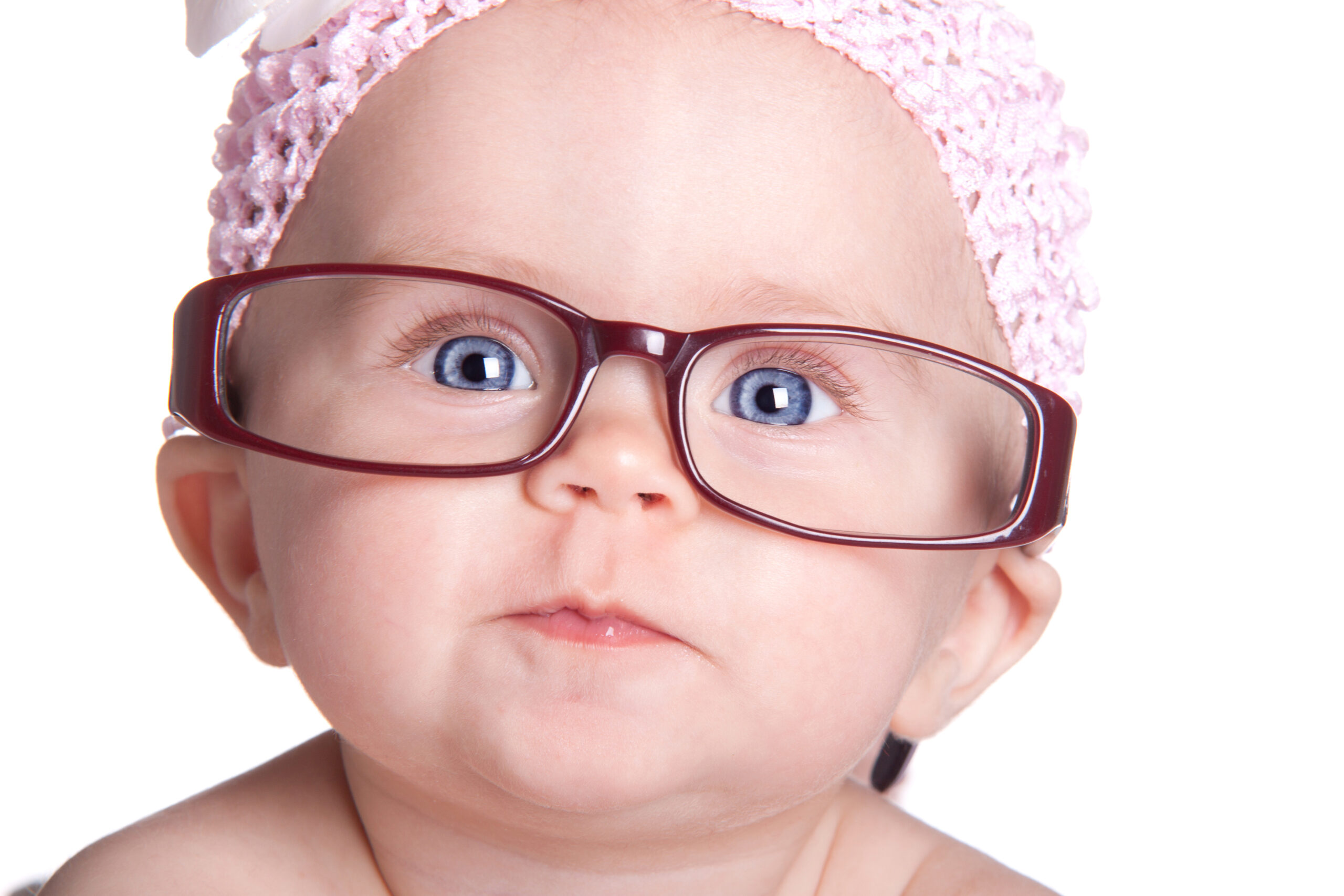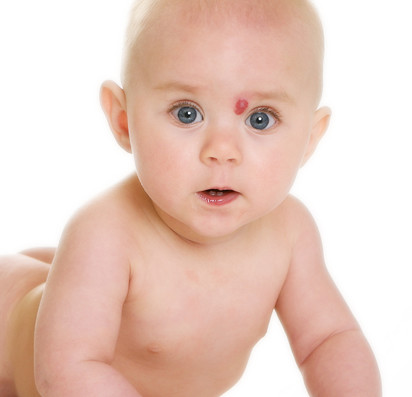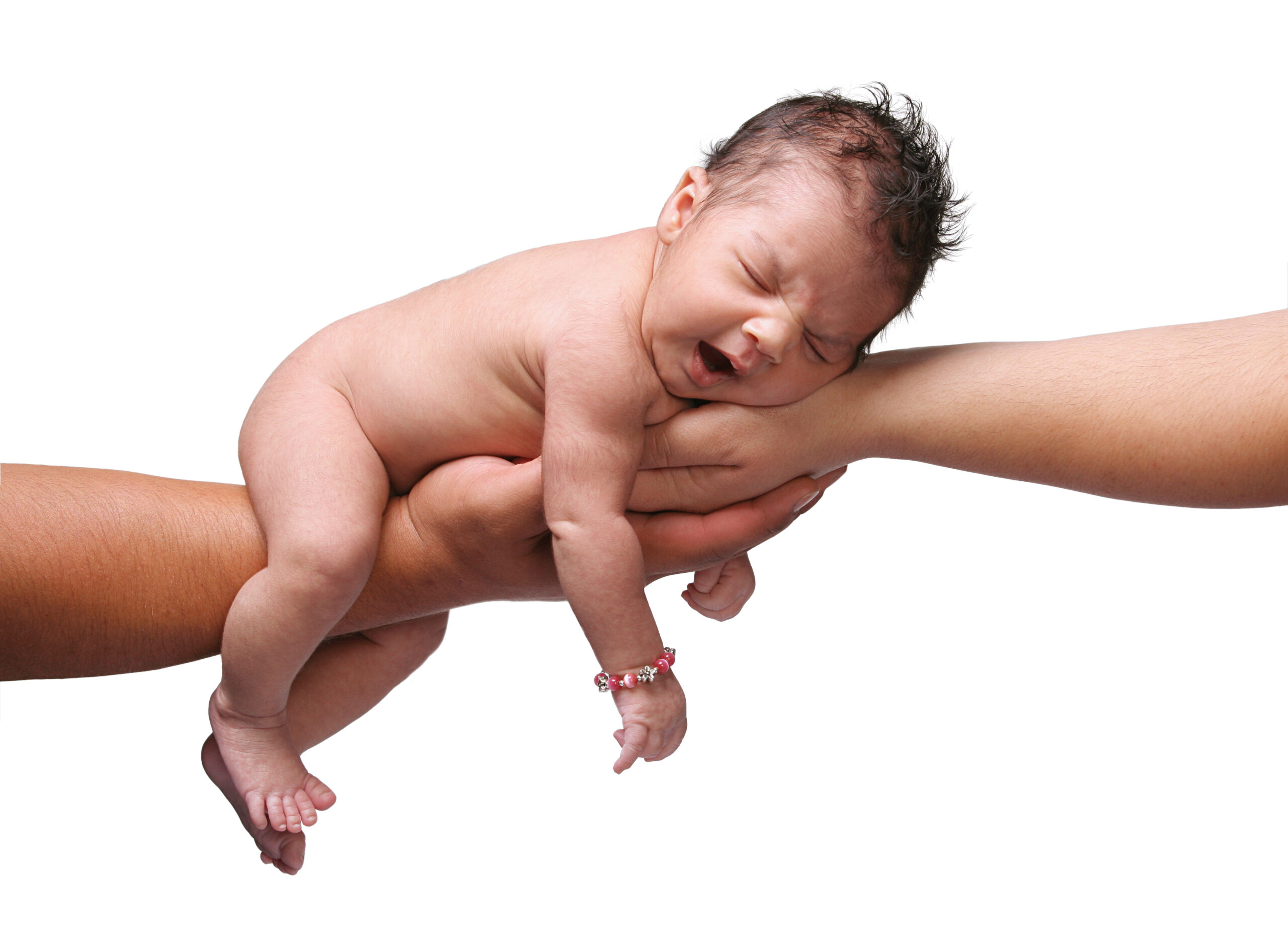Parents often ask me how far a baby can see. But it’s not just about distance. The visual system is so complicated that there are many other factors at play. Here is everything you need to know to help your little one’s visual development.
Babies are born with eyeballs and a visual processing center in the brain, but their ability to see is not yet fully developed. It isn’t just that babies are near-sighted, with vision around 20/200. Their eyeballs are surprisingly light-insensitive. A one month-old baby needs fifty times more illumination to detect the presence of light than adults, because the photoreceptors in the retina haven’t developed. So, it doesn’t really help your baby sleep to keep the lights low in the nursery. The only thing you’ll likely accomplish is stubbing your toes. Even at three months, babies still need ten times as much light to see properly!
Their eyes are also insensitive to color. Newborns easily distinguish high contrast colors like black and white and they are great at seeing various shades of gray. A one week-old baby can perceive some colors—red, orange, yellow and green. But it takes a full five months before they can see subtle differences between orange and red-orange for example and can see blue and violet or pastel colors. So, hanging a vividly colored mobile over the crib may make the nursery decor more attractive, but the color is somewhat irrelevant to the baby. And as for the high contrast white and black geometric toys, they are easier to see – but it’s probably better for their development to look at more subtle objects.
All this research tells us that a normal visual environment without black and white toys is quite rich and stimulating to your baby. In fact, you might consider giving your baby a rest from the black and white toys so that he or she can explore more subtle, and perhaps more important objects (like your face and eyes, or his or her own hands and feet).
– Russell D. Hamer, PhD Associate Scientist at the Smith-Kettlewell Eye Research Institute
Babies’ have a visual speed limit
Even once a baby can see colors, she is still not capable of distinguishing objects that are moving quickly. You may see an orange cat dart across the room, but a baby can’t integrate the color, speed, direction and size of the cat at the same time. So she won’t see what you see at all. Researchers at the University of California at Davis (Farzin et al.) tested how well infants six-to-fifteen months old could distinguish the rapid flickering of a collection of squares on a screen. By adjusting the flicker rate, the researchers found that the infants’ visual speed limit was about half a second, ten times slower than an adults. So, for example, a baby watching a fast-moving scene on TV might only see it as a blur if the action changes faster than twice a second.
Hey look, it’s Mom!
It’s true that babies’ vision may need some time to develop into the sophisticated system that adults take for granted. But they are pre-wired from birth to recognize their own mothers.
In one experiment, French scientists showed four-day-old infants pictures of their mother’s face and those of strangers. This experiment was especially cool because by using photos it eliminated the possibility that the baby was using smell or sound to identify mom. The researchers found that the newborns looked longer at the photo of their mother than of a stranger.
Then, in a second experiment, researchers discovered that the babies couldn’t tell mom from a stranger when both were wearing head scarves (Pascalis). Newborn infants look at the borders of objects, especially high-contrast borders. When looking at a human face, a newborn will look at the hairline. After about 2 months they start to pay more attention to facial features. So older infants are not fooled by such minor alterations in Mom’s appearance.
The lesson here? If you want your newborn to recognize you – no head scarves, but a surgical mask is just fine. Your baby will still recognize you if you cover up your nose and mouth.
All of this knowledge about infant vision means that your pediatrician doesn’t need to do a detailed eye examination. We don’t need expensive gadgets or intensive study to assess baby vision. Usually, we only need to observe how your baby is looking around and tracking objects. That simple check tells us that your baby’s eyes and neural visual circuitry are developing just fine.
Want to know more? Read about How to decorate a smart baby’s nursery
References
Pascalis, Olivier, et al. “Mother’s face recognition by neonates: A replication and an extension.” Infant Behavior and Development 18.1 (1995): 79-85.
Farzin, Faraz, Susan M. Rivera, and David Whitney. “Time Crawls The Temporal Resolution of Infants’ Visual Attention.” Psychological science (2011).









